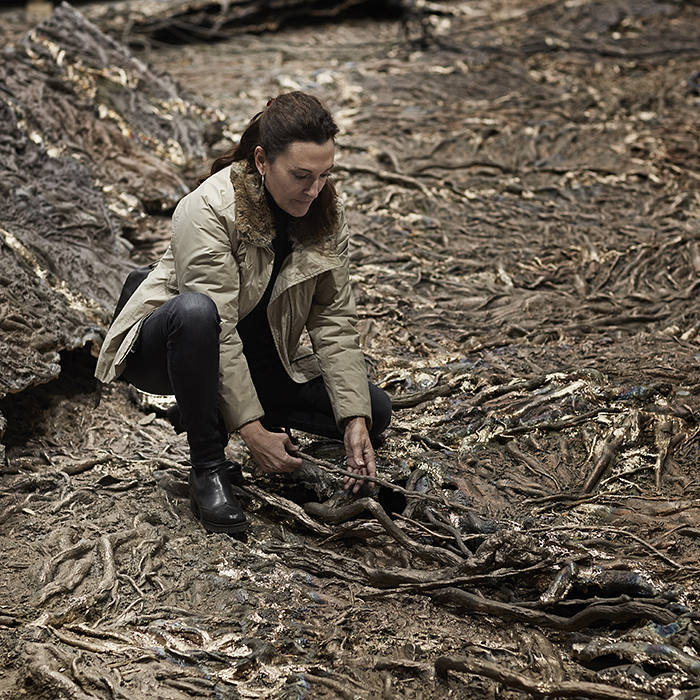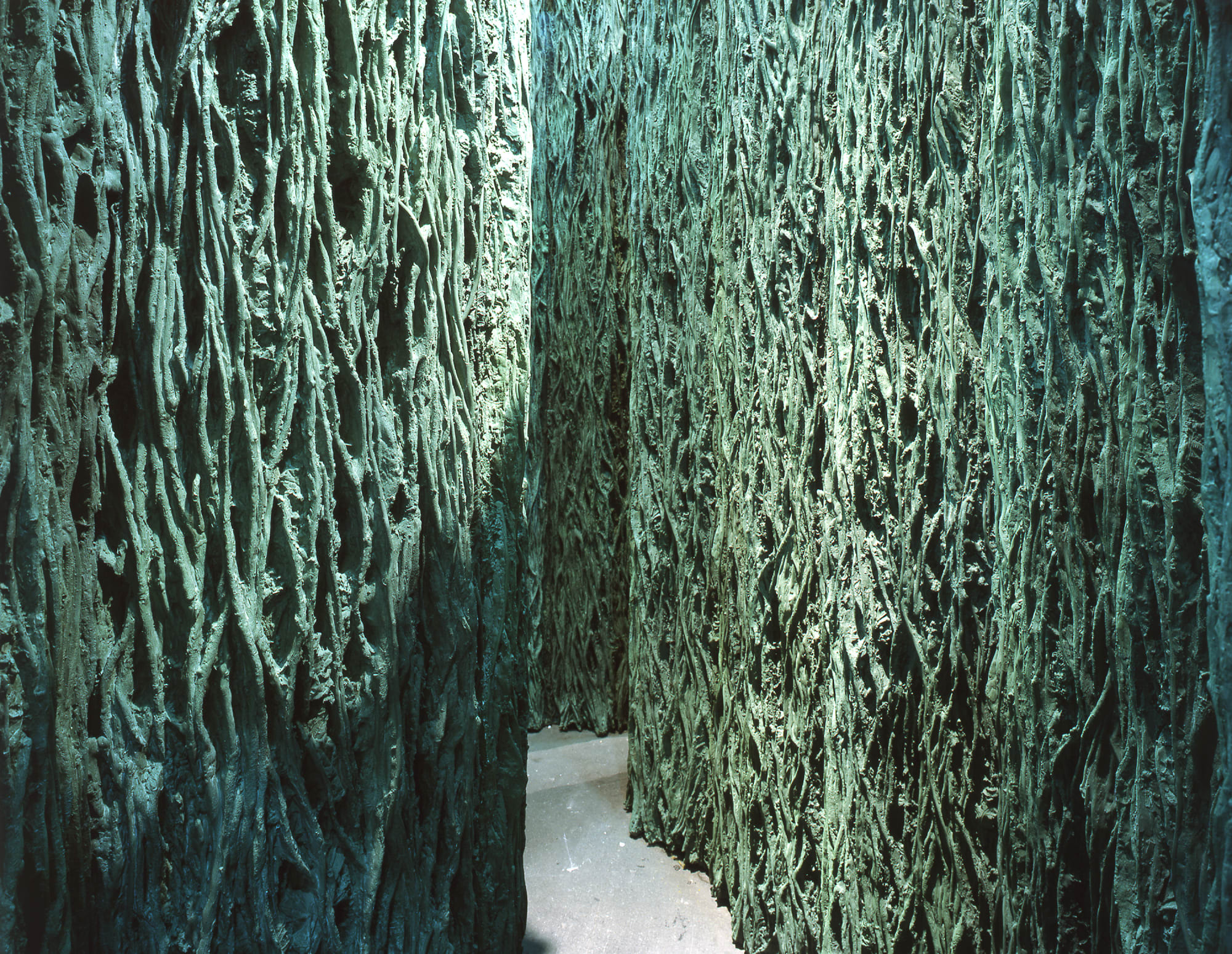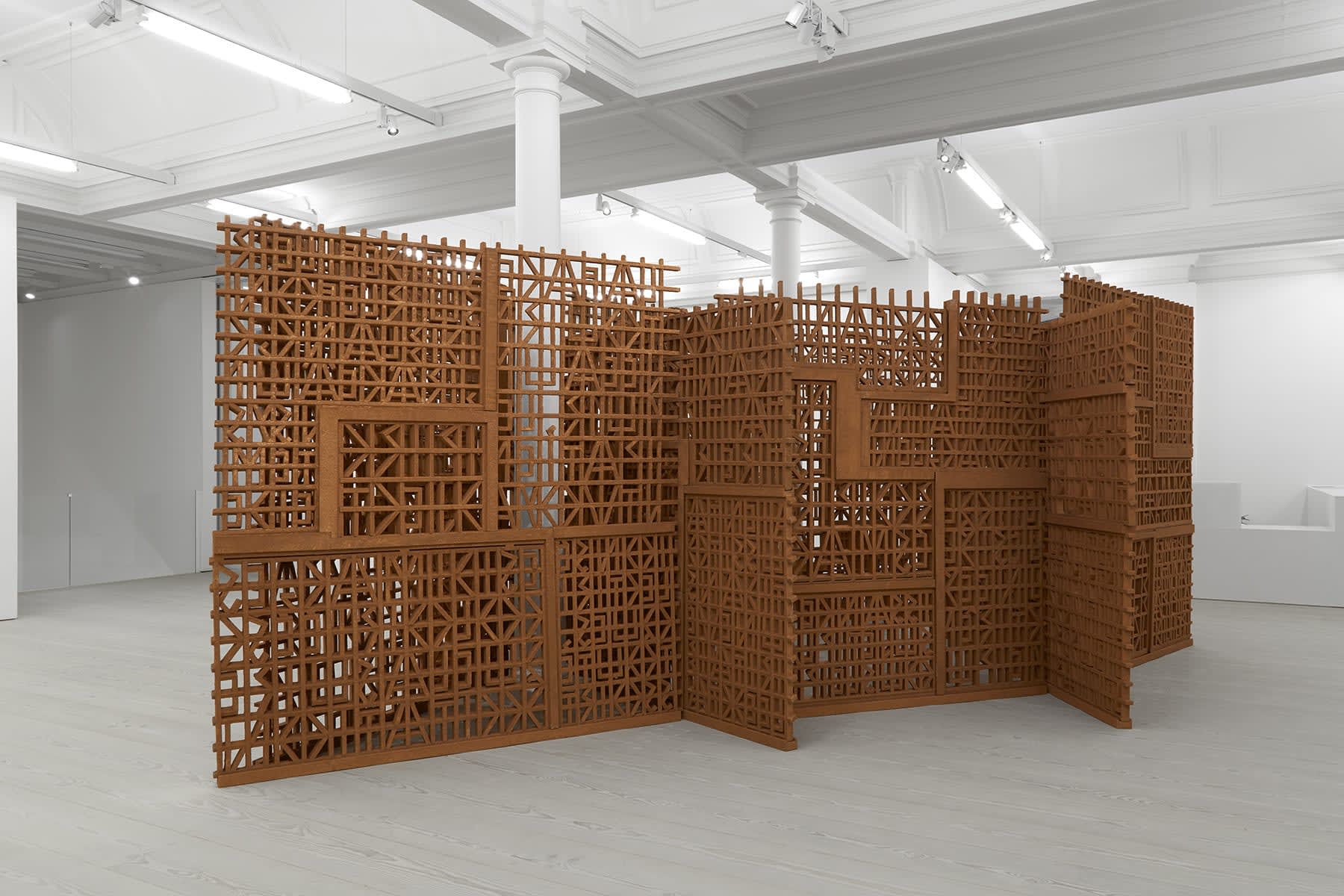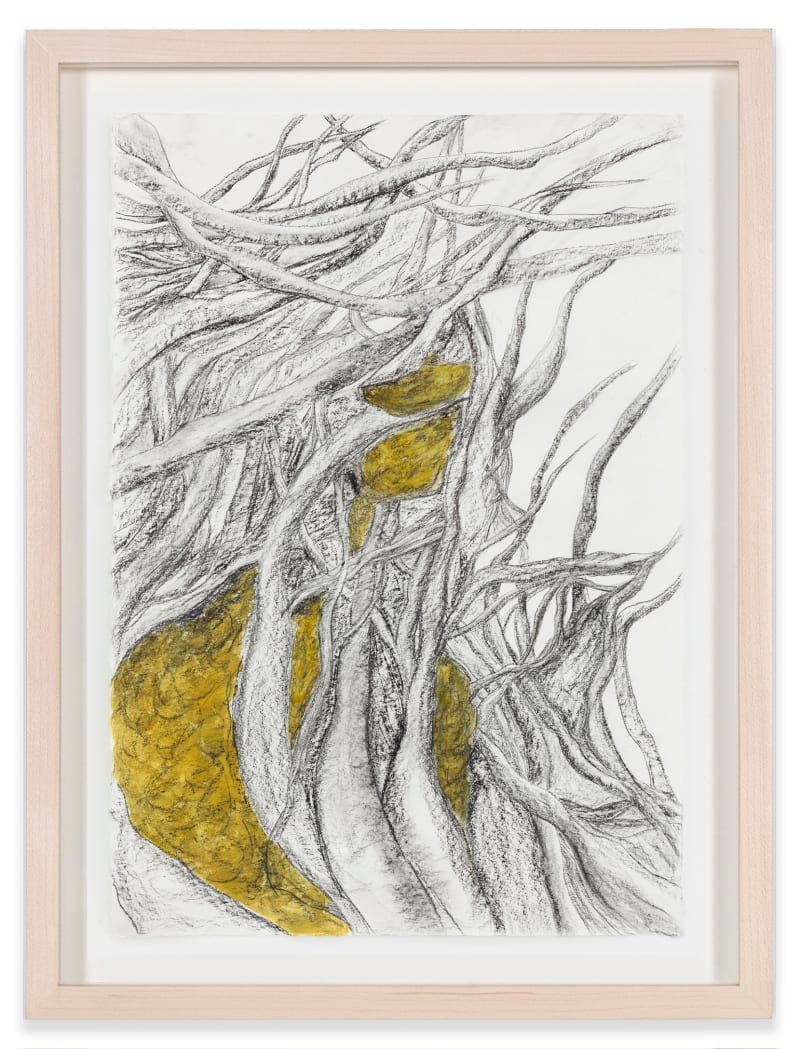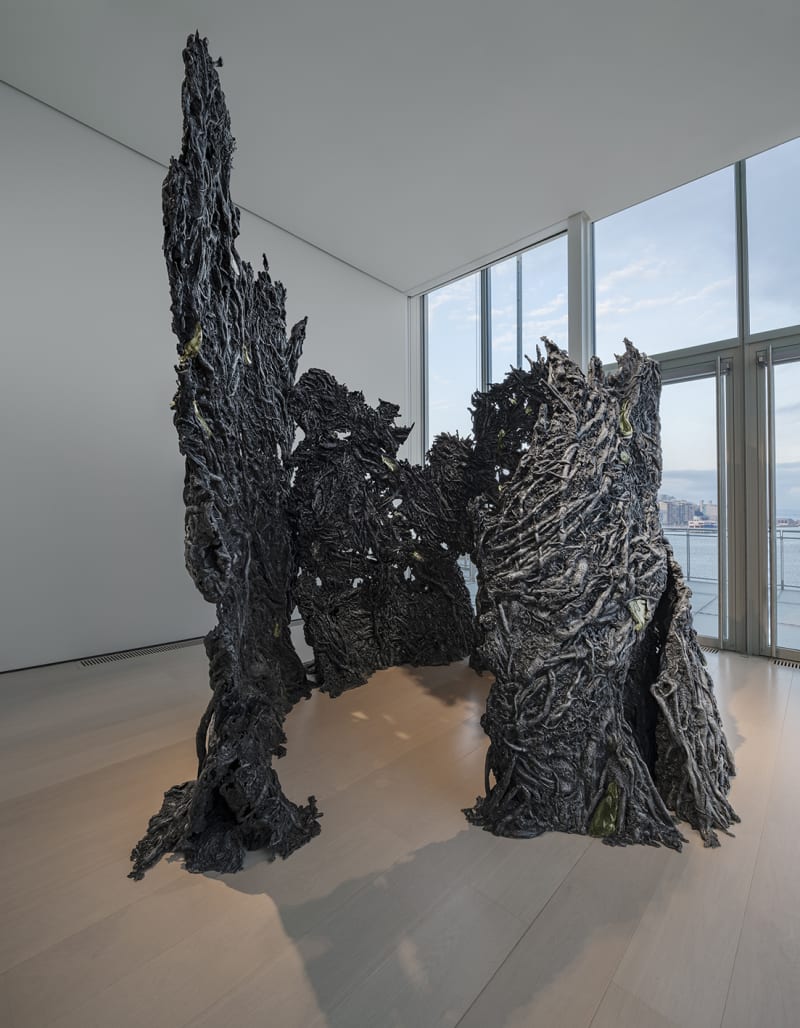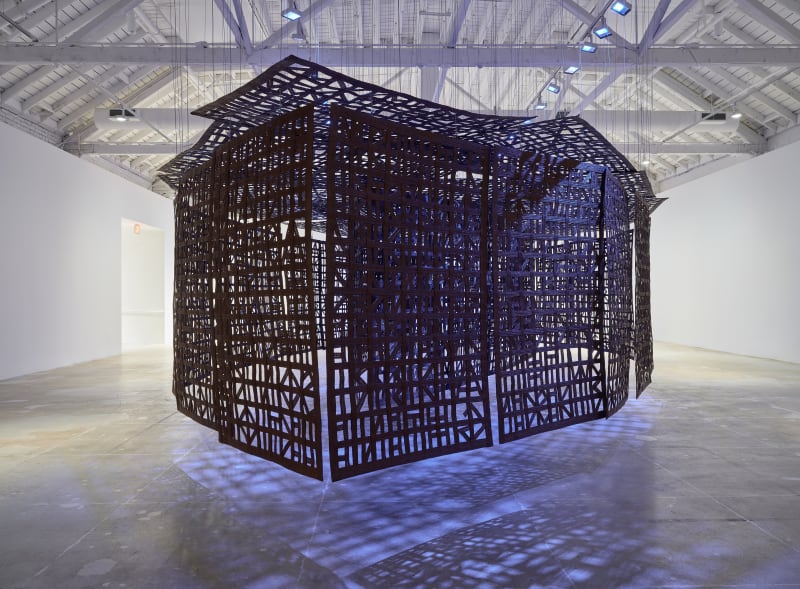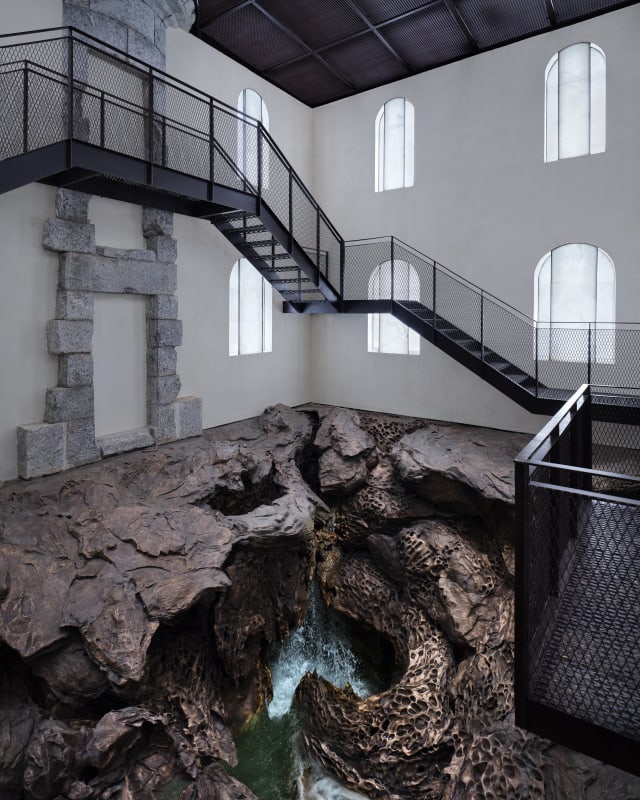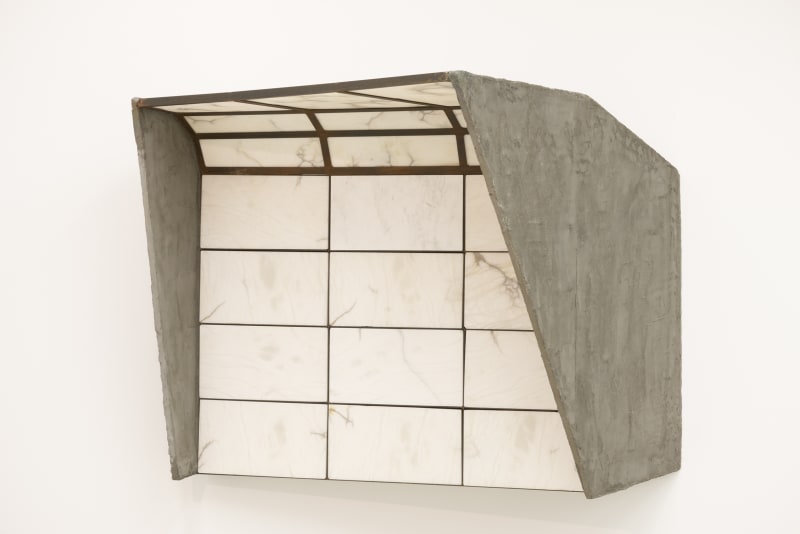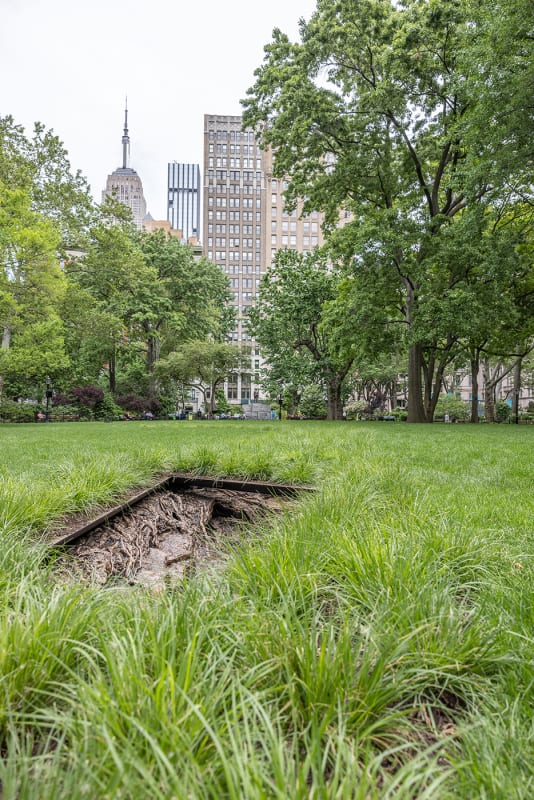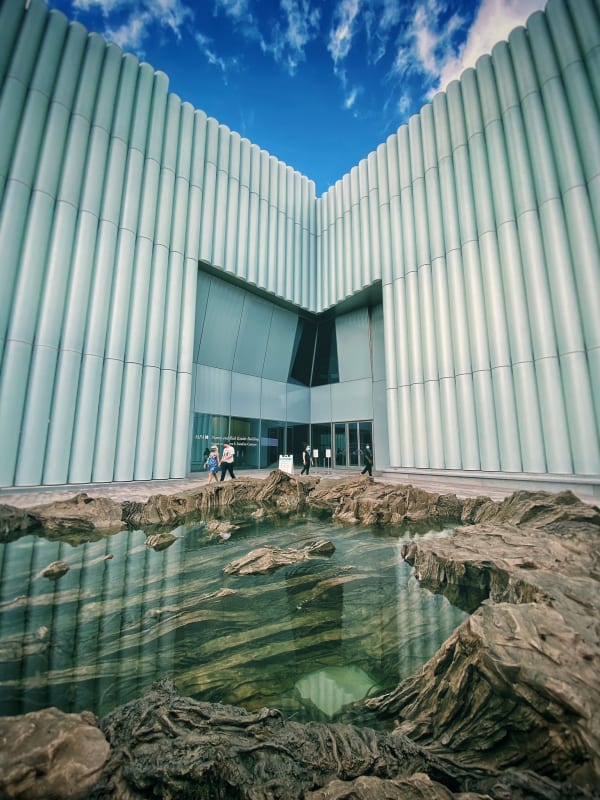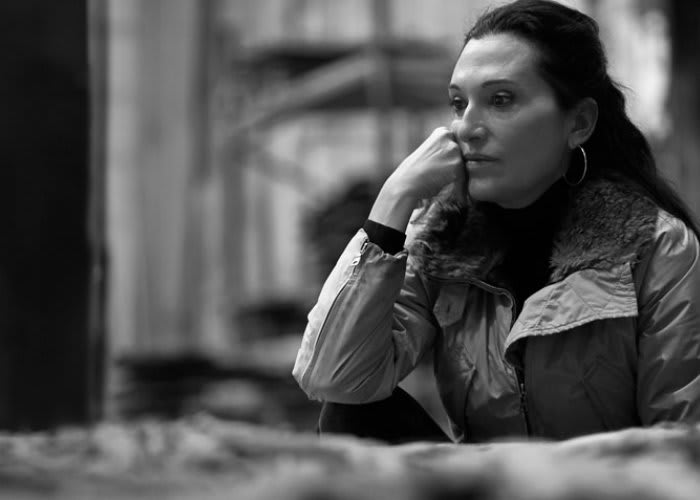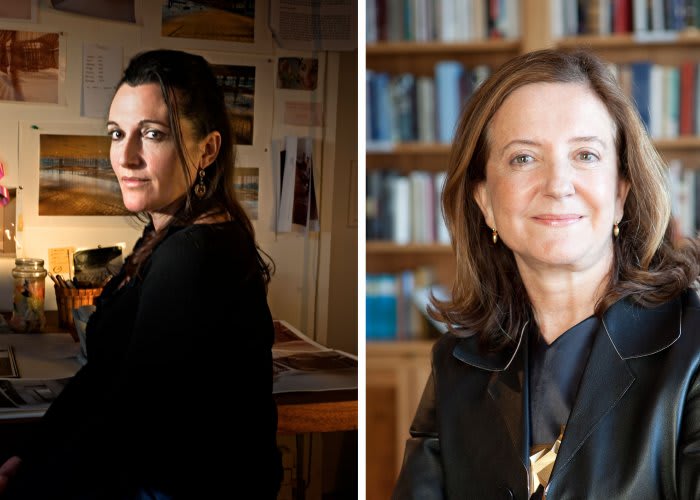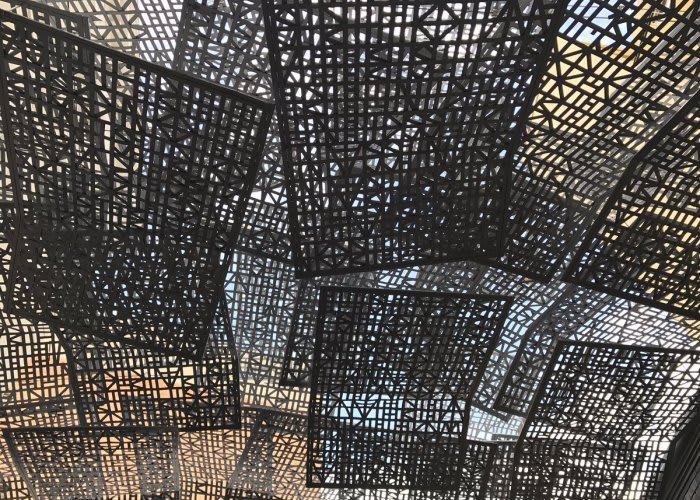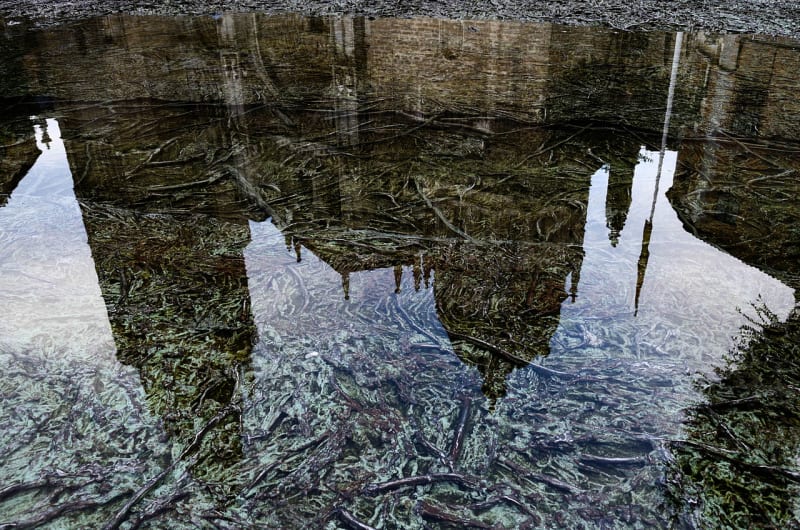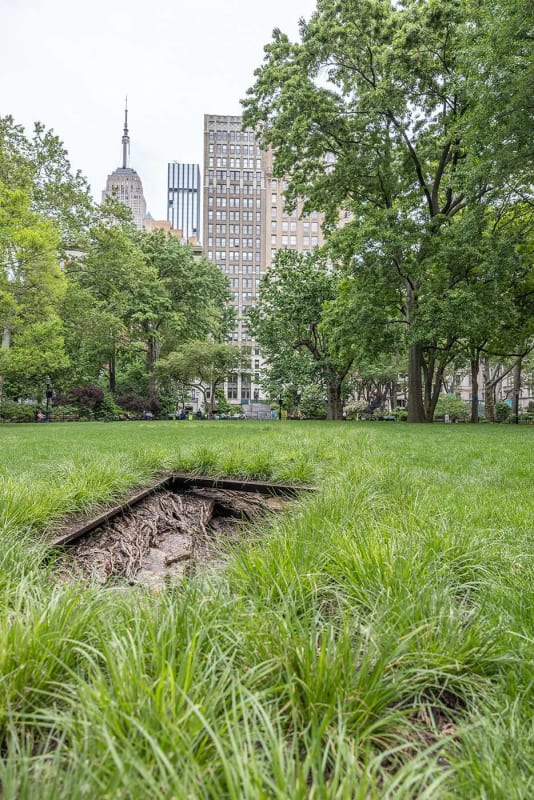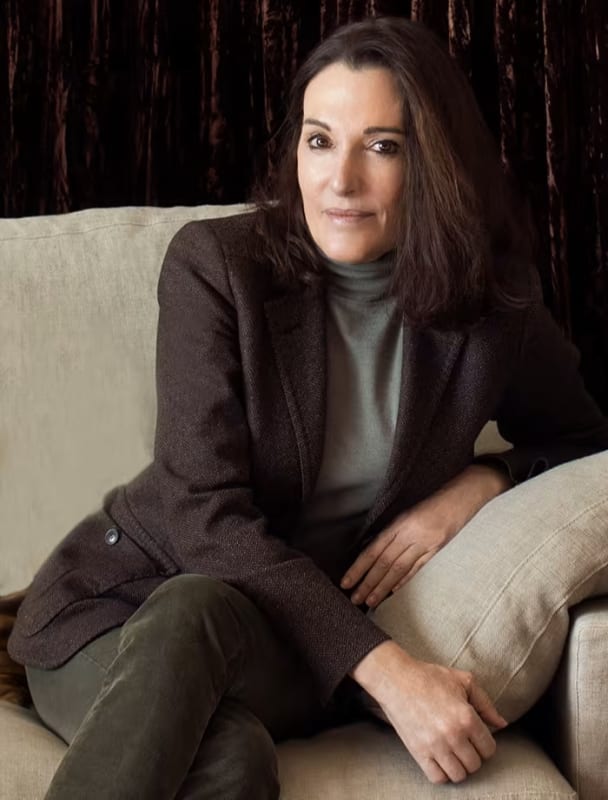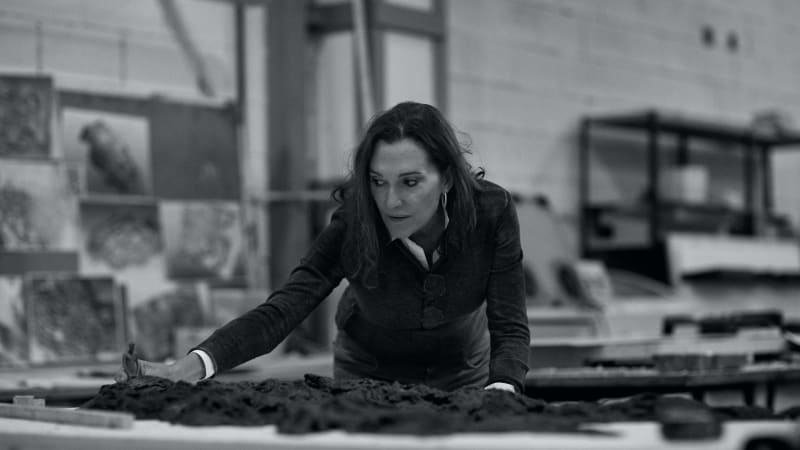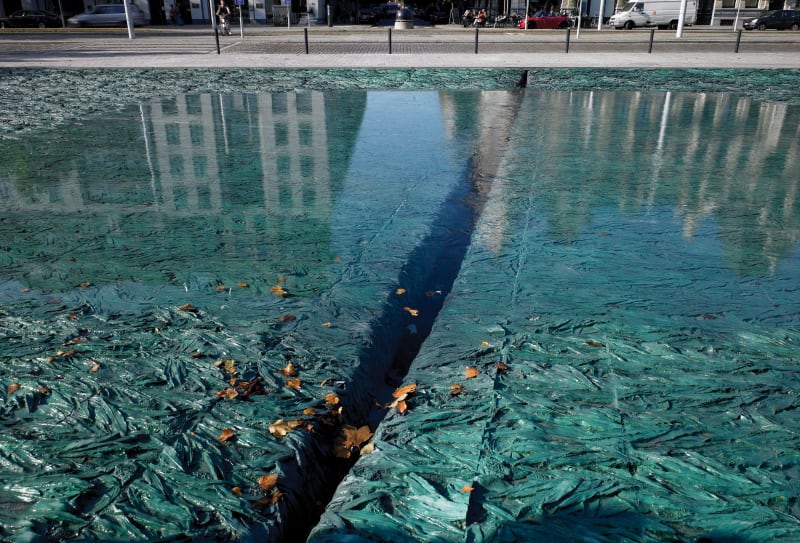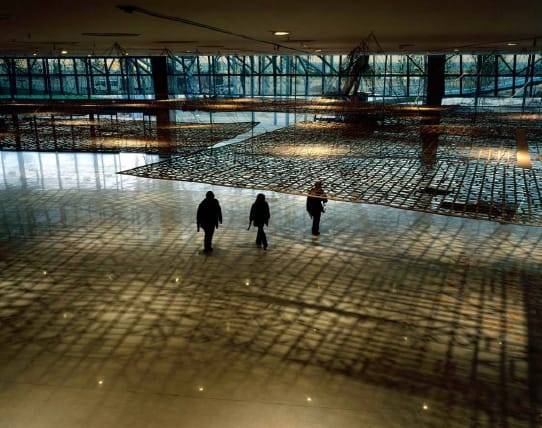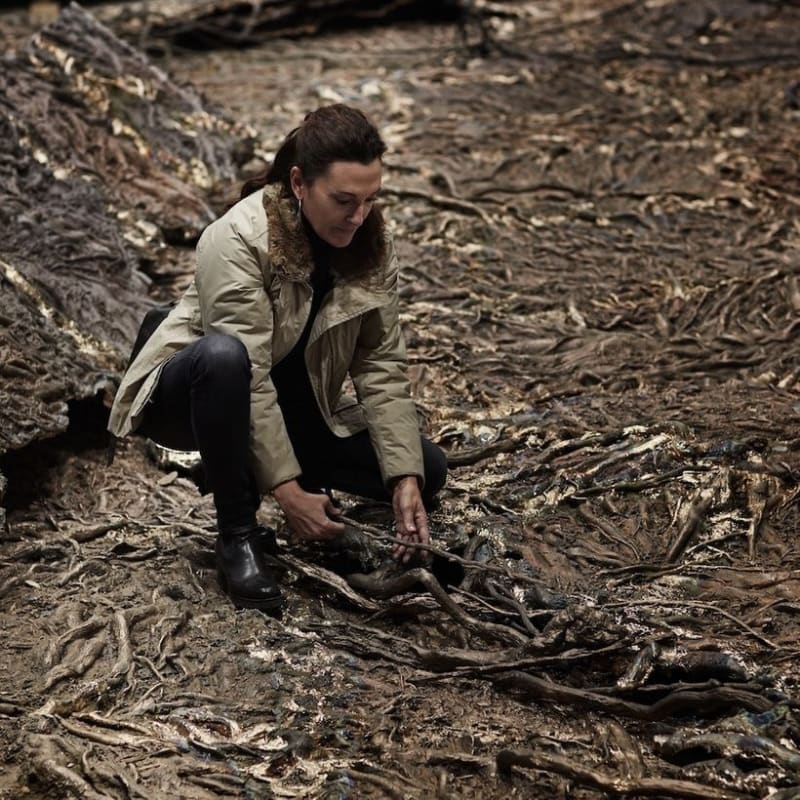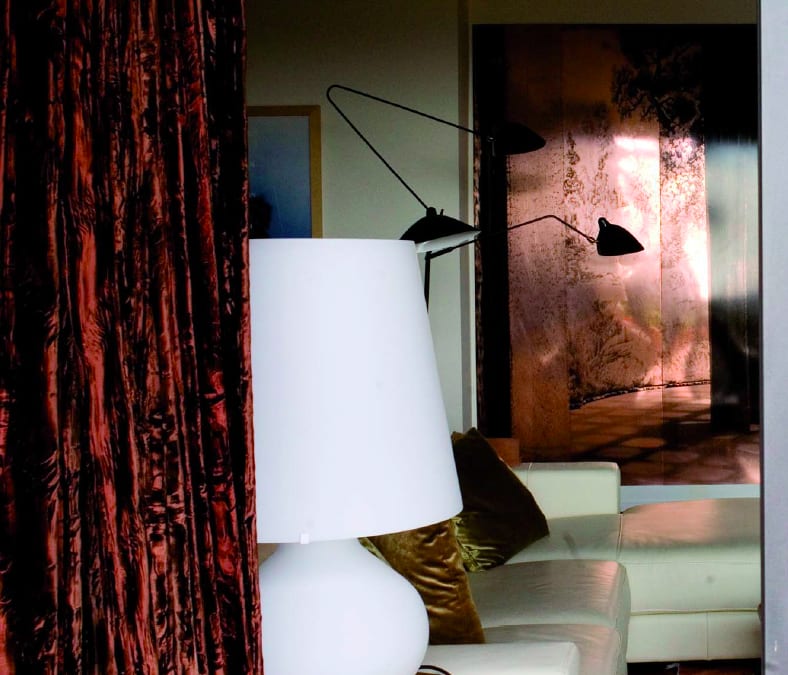Biography
Iglesias has defined a unique sculptural vocabulary, building immersive and experiential environments that reference and unite architecture, literature and culturally site-specific influences.
Cristina Iglesias was born in San Sebastián, Spain in 1956. She currently lives and works in Torrelodones, Madrid. Throughout her career, Iglesias has defined a unique sculptural vocabulary, building immersive and experiential environments that reference and unite architecture, literature and culturally site-specific influences. Through a language of constructed and natural forms rendered in various materials and ranging from suspended pavilions, latticed panels, passageways, and mazes, to walls imbued with texts and structural and vegetative forms, she poetically redefines space by confounding interior and exterior, organic and artifice, combining industrial materials with natural elements to produce unexpected new sensory sites for the viewer.
Her work has been shown recently in solo exhibitions at Centro Botín, Santander, Spain (2018); Musée de Grenoble, France (2016); BOZAR, Centre for Fine Arts, Brussels, Belgium (2014); a large retrospective at the Museo Nacional Centro de Arte Reina Sofía, Madrid, Spain (2013); and at Casa Franças, Rio de Janeiro (2013). Earlier solo shows have been exhibited at the Fondazione Arnaldo Pomodoro, Milan (2009); Ludwig Museum, Cologne (2006); Irish Museum of Modern Art, Dublin (2003); Whitechapel Gallery, London (2003); Museu Serralves, Fundaçao Serralves, Oporto (2002); Guggenheim New York (1997); and Guggenheim Bilbao, Spain (1999).
Iglesias has participated in a number of international exhibitions and public commissions and has represented Spain at the 1986 and 1993 Venice Biennales and at the Sydney Biennale in 2012. Recent public commissions include Forgotten Streams at Bloomberg Headquarters in London (2017) and the enormous permanent public commission, Tres Aguas – a Project for Toledo, Toledo, Spain (2014). In 2020 she was awarded the Royal Academy Architecture Prize, London.
Iglesias has defined a unique sculptural vocabulary, building immersive and experiential environments that reference and unite architecture, literature and culturally site-specific influences.
Selected works
